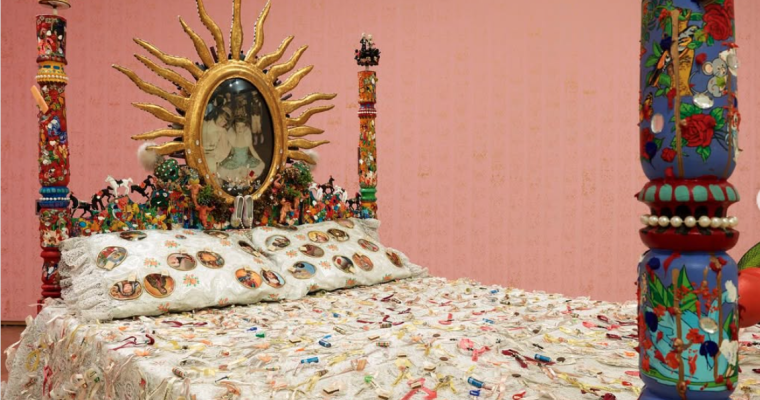One of my favorite stories to hear my grandfather, the man I called Pop, tell, was the moment he first met me. My father, a first-time parent with mild OCD, was stricken with anxiety about any germs that visitors might bring to the hospital, so he forced everyone, including Pop, to hose down and suit up in scrubs before they could hold me. Pop used to tell me how he was so excited to hold his first grandchild, and that my dad was so strict about cleanliness that it felt like forever before he could hold me. When Pop finally took me into his arms, I greeted him by immediately defecating (his word was much coarser) on him. My gift to him was perhaps not as kind and thoughtful as the small glass vase filled with flowers he brought me that day.
While I wasn’t conscious as a newborn, I firmly believe this was the moment that cemented Pop’s and my relationship. As his namesake, my middle name being Denise for his first name, Dennis, we shared something special that couldn’t quite be defined. I was his granddaughter, and he was my grandfather, and that was all there was to it. Through the years, I have kept the small glass vase that once held the first flowers a man ever gave me on my dresser. Through different schools, different friends, different room organizations and paint colors, the vase has stayed there. I have probably filled it with fresh flowers at one time or another; it has probably sat empty much of the time. For the past several years, it has held a sprig of faux baby’s breath.
The vase is small in stature—it is 5 inches tall, with a diameter of 1 3/8 inches at its base and 2 inches at its mouth. It is smooth to the touch and relatively light, fragile enough that a simple drop onto hardwood floor would shatter it. It has a curving shape that calls to mind a dramatic ballgown that might be worn on the red carpet—the kind of silhouette worn by actresses in the old Hollywood movies he used to show me. The mouth (neckline), which is about as wide as the widest part of the body of the vase, narrows into a slim neck (waist), which then widens into a full, bulbous slope downward (skirt), before tucking slightly back in and coming to a halt and evening out at to a flat bottom (hemline). It is transparent, uncolored glass with a scalloped, ruffled lip at the top, which, when viewed from above, creates a shape reminiscent of the flowers the vase once held. Combined with the ruffled exterior lip, the opening through the neck appears as what would be the flower’s circular center in a 60s-style retro pattern or a child’s drawing. Its physical roundness calls to mind the roundness of the word “Pop:” its even, palindromic nature and the curves of the letters on the page and the tongue.
About 1 ¼ inches below the lip, there is a small orangey-brown stain which forms a vaguely serpentine shape with a series of tiny brown dashes trailing from it. It almost resembles rust, though I can’t imagine what I would have stored in it that would have left such a residue. About halfway around the vase from this stain is a small bubble in the glass, only about as long as one of the 16th inch lines on my ruler. But aside from these imperfections, the vase is in relatively good condition for being at least 24 years old. While there are no longer flowers, the vase does hold some dust and grime that has collected at the bottom on the inside. Mixed in is a small piece of silver tinsel of unknown origin and several small brown hairs, probably my own.
Though there are no visible chips in the vase, there is a network of cracks towards its base. As a child, I thought this meant the vase had previously been broken and then glued back together, bit by painstaking bit. This made complete sense to me. Though he told me often I was “high maintenance,” I knew Pop would spend however many hours it took to glue those tiny glass shards back together for me.
Today, looking at the vase as a 24-year-old, I am almost certain the vase was designed to have a crackled texture. The way the pattern stops at almost exactly two inches above the base, and the way the line where crackled meets smooth mimics the scalloping of the mouth, indicate to me that there was purpose in this design. It was likely just graphic interest on an otherwise unremarkable vase, one that has sat dormant on my dresser for years.
Pop passed suddenly in September. His heart was failing; he had outlived even his own expectations. But it shook us all the same. I’m sure there are plenty of metaphors I could draw up about broken hearts and “broken” vases and the emptiness of the vase and the emptiness of my heart, but none of those would be genuine. Instead, I think about flowers. Pop loved flowers. He gave me my first flowers, would seek out beautiful flowers to photograph, loved museum paintings of flowers. The flowers once held in this vase are long since dead. I could replace them, but I won’t. So instead, I am left with this vase with, I suppose, unfulfilled potential. Here it is, solid and whole, defining the negative space that is designed to hold the ephemeral and fleeting. And I am both amazed by and angry at this vase. How dare it continue to take up such space when what it used to hold is so long gone? How beautiful is it that it does so!





